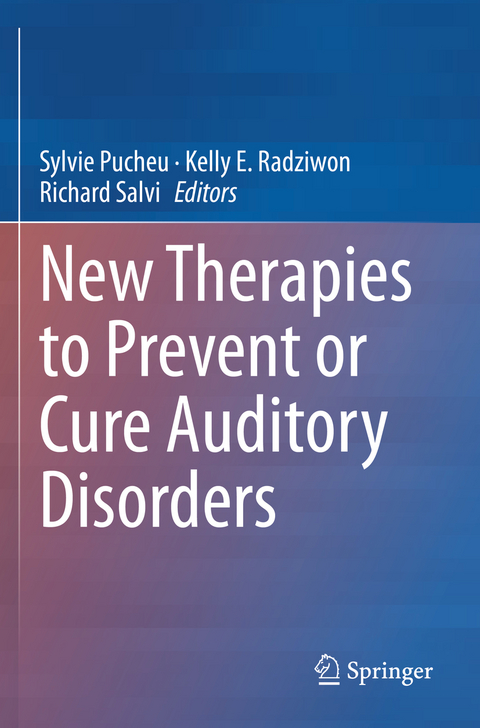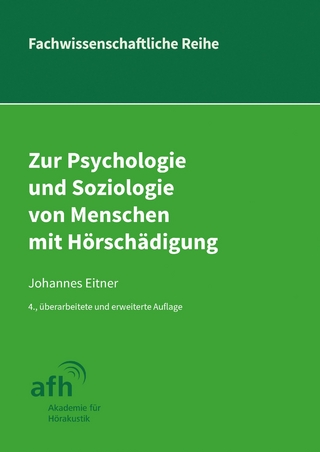
New Therapies to Prevent or Cure Auditory Disorders
Springer International Publishing (Verlag)
978-3-030-40415-4 (ISBN)
The topic of this book was selected with the goal of emphasizing mechanisms that induce hearing loss and tinnitus which lead the selection of promising targets for hearing disorder treatment.
Hair cells (HC) are the sensory cells of the inner ear required for both auditory and vestibular functions in all vertebrates. HC are progressively lost during ageing and they are in addition sensitive to physical and acoustic traumas, infectious diseases and chemicals present in commonly used treatments such as anticancer, antimalarial or antibiotics. As adult mammals--including humans--cannot regenerate dead HC, all the possible injury could result in irreversible and permanent hearing loss. It has been shown, however, that a limited capacity to regenerate HC exists in mouse at an early stage of development. The regenerative capacity of HC then appears simply "repressed" in adult mammals, and one could expect it will be possible to re-activate it with an appropriate therapeutic approach which is still to be defined.
Immune-mediated inner ear disease has been introduced and accepted as one SNHL pathophysiology; it responds to immunosuppressive therapy and is one of the few reversible forms of bilateral SNHL. Macrophages are always present in the spiral ligament of the lateral wall and are activated in response to various types of stimuli, including noise exposure, ischemia, mitochondrial damage, and surgical stress. Recent studies have also revealed another type of immune cell, called perivascular melanocyte-like macrophages (PVM/Ms), in the stria vascularis. The book will include a review of inflammatory/immune cells in the cochlear lateral wall, the pathways involved in cochlear damage and their potential as therapeutic targets.
The final chapter provides an overview of current animal model of tinnitus and hyperacusis. Nowadays no effective treatment exists to cure tinnitus and hyperacusis. One major obstacle to arises from the fact that tinnitus is a subjective phenomenon, the only possible diagnosis relies on self-reports of the subjects. The main constraint of the use of animal models is the subjective character of tinnitus. This chapter describe the advancement in animal models which play an important role in revealing the underlying mechanisms and treatment for tinnitus and hyperacusis.
lt;p>Dr. Sylvie Pucheu has more than 23 years' experience in academic research and the pharmaceutical industry. Dr. Pucheu is a founder and Chief Scientific Officer at CILcare, a preclinical provider in otology. Before co-founding CILcare, she led an in-vivo pharmacology group working on tinnitus and hearing loss. She has also led scientific teams at Sanofi, and has been involved in their Ethics Committee.
Dr. Kelly E. Radziwon is a Research Assistant Professor in the Dept. of Communication Disorders and Sciences at the University of Buffalo and a member of Center for Hearing and Deafness. Her research focuses on the perceptual aspects of normal and impaired hearing in animal models. Dr. Radziwon is an expert on tinnitus, hyperacusis, temporal processing deficits and complex auditory perception.
- Life-style intervention to prevent age-related hearing loss : calorie restriction., 2. Noise-induced hearing loss and drug therapy ; basic and translational science., 3. Review of ototoxic drugs and treatment strategies for reducing hearing loss., 4. Approaches to regenerate hair cells and spiral ganglion neuron in the inner ear. , 5. Immune system and macrophage activation in the cochlea: implication for therapeutic intervention., 6. Preclinical animal Behavioral models of hyperacusis and Loudness recruitment., 7. New automatic and robust measures to evaluate hearing loss and tinnitus in preclinical models.
| Erscheinungsdatum | 08.04.2021 |
|---|---|
| Zusatzinfo | VII, 186 p. 29 illus., 25 illus. in color. |
| Verlagsort | Cham |
| Sprache | englisch |
| Maße | 155 x 235 mm |
| Gewicht | 308 g |
| Themenwelt | Medizin / Pharmazie ► Medizinische Fachgebiete ► HNO-Heilkunde |
| Medizin / Pharmazie ► Studium | |
| Naturwissenschaften ► Biologie ► Humanbiologie | |
| Schlagworte | drug therapy • hearing loss • Hyperacusis • Noise-Induced • ototoxicity • Tinnitus |
| ISBN-10 | 3-030-40415-3 / 3030404153 |
| ISBN-13 | 978-3-030-40415-4 / 9783030404154 |
| Zustand | Neuware |
| Haben Sie eine Frage zum Produkt? |
aus dem Bereich


